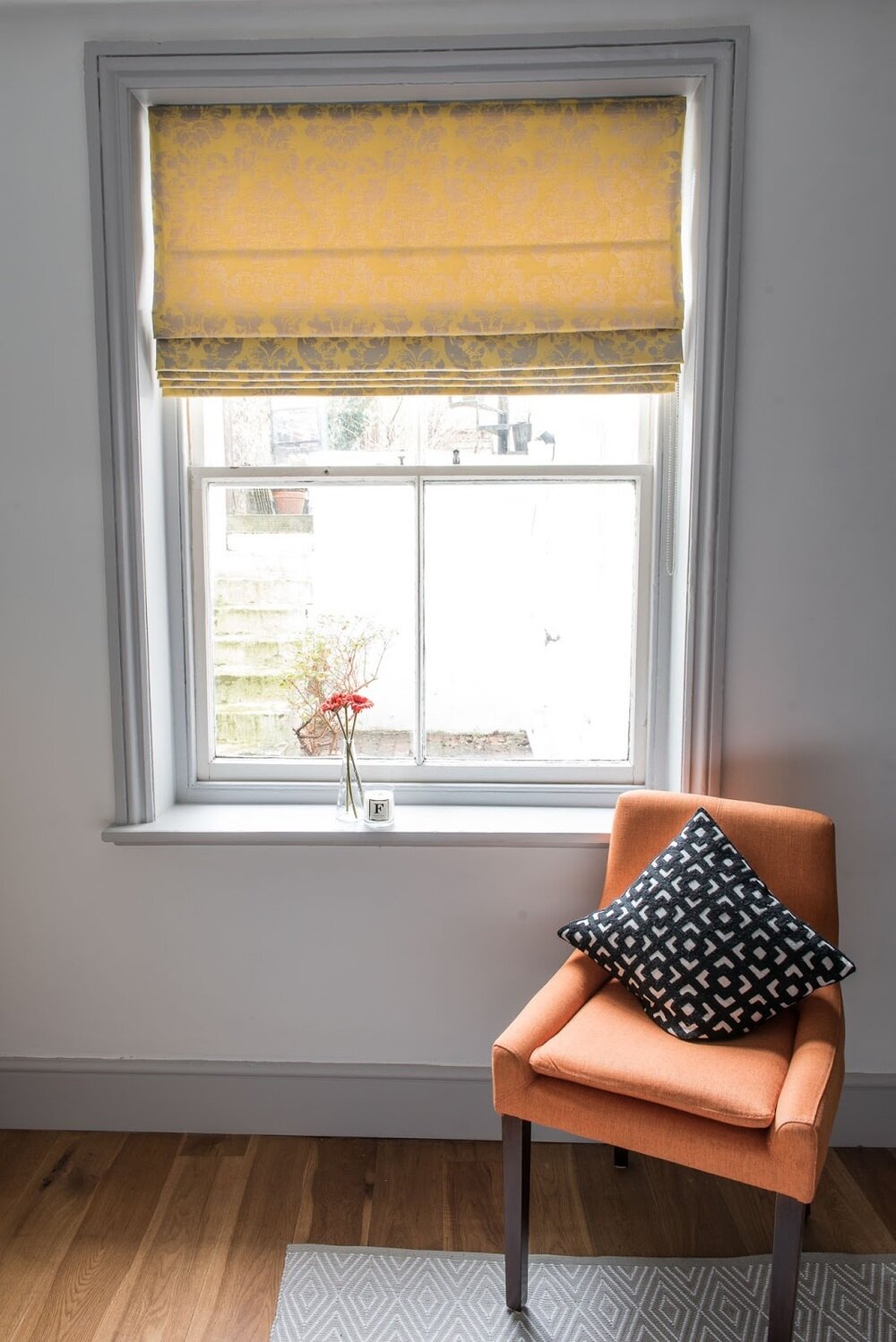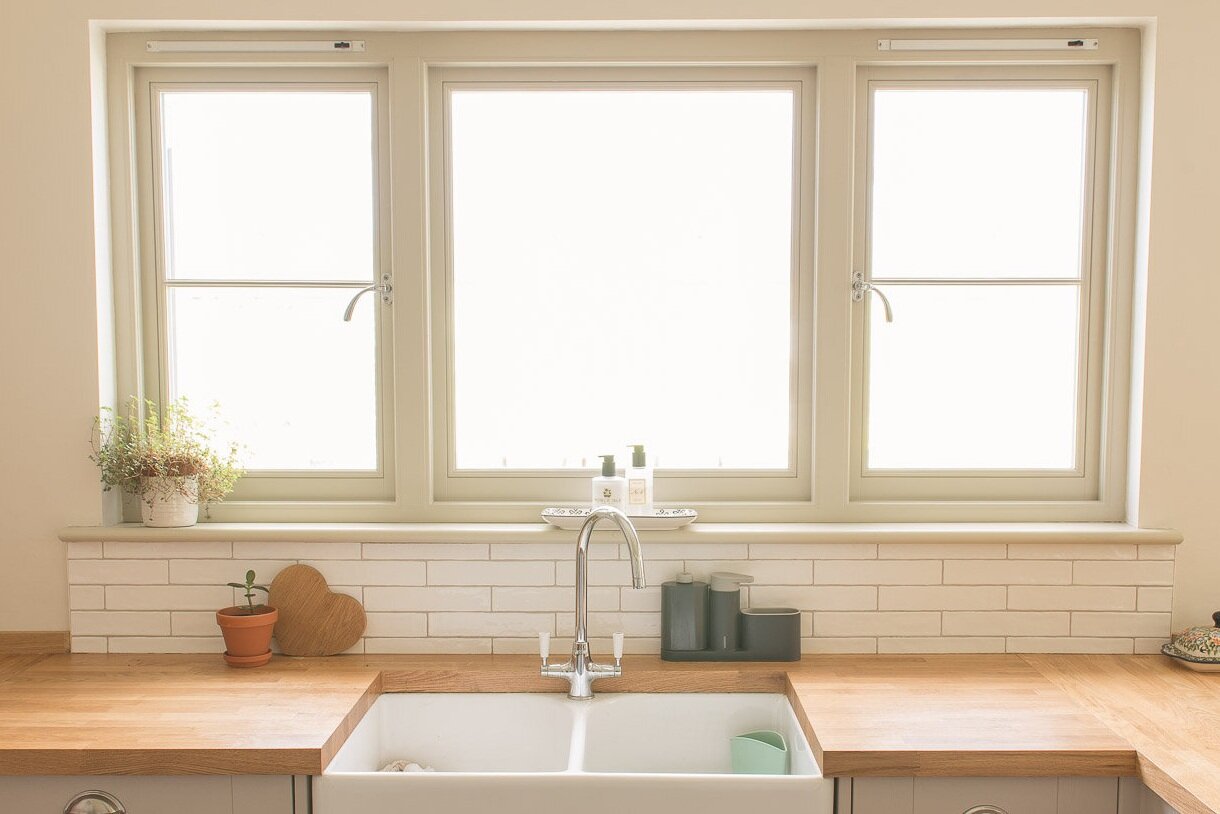Think you have a damp problem? Maybe you have a condensation problem
This post contains affiliate links, for more info look at the disclosure page
Have you noticed clothes in your wardrobe going mouldy? Have your walls started getting black patches? When you wake up do you have condensation on the inside of your windows?
These were all things that started happening to us when we used to lived in our Victorian basement flat and after months of getting fed up with our drawers sticking, our dry foods getting damp, we decided to pay out some money to find a solution to our condensation problem once and for all.
We first paid for a damp survey, and discussed the issues with the surveyor when he came to inspect the flat. He immediately identified that yes the flat had damp, but it was condensation and moisture build up that was causing all of these issues.
The good news? Condensation is very much controllable. So we took his advice and tried out several different solutions, finally getting our condensation under control.
Firstly, what is condensation?
Condensation is the name for the process where water that is in the air comes up against a surface that is cooler than it is forming water droplets on the surface. This happens every single day in a home. When you shower, when you cook, when you dry clothes…
When condensation is not managed effectively it can cause different problems:
Water droplets or pools can form on surfaces (e.g your bathroom tiles and walls after showering)
Condensation on windows
Clothes can start to smell rusty and feel damp
Mould growth can occur on walls and wardrobe surfaces
Unpleasant smells can occur
Condensation on walls
Damage to wall coverings e.g. paint or wallpaper peeling
Please be aware that condensation is different to rising damp or issues caused by penetrating damp, however they can be linked.
A condensation problem is an ongoing battle, especially throughout the autumn and winter months but one that can be controlled by increasing air flow through your home, drying out the air and through making small changes in habits…
How we resolved our condensation problem
1. We bought a dehumidifier
Meet Norbert, we’re not entirely sure why Norbert ended up being named Norbert but we think it suits him and as he helped us no end, so he deserved a lovely name.
Living in a small flat without a tumble dryer (or even space for one), in the autumn and winter like many people we were restricted to drying clothes inside. This was the number one problem that caused our condensation. To help resolve the condensation problem we bought a dehumidifier and we can confirm this had an incredible impact on our moisture issues. Immediately we realised that our clothes were drying in a third of the time, down to the simple fact that Norbert dehumidifies the air. The flat became dryer thanks to us purchasing this little guy.
We have since moved house and now use this in our current place to expedite the drying of our clothes when drying inside. We bought the EcoAir DC12 because it’s a relatively eco-friendly machine. It’s cheap to run and measures humidity levels in the air immediately when you turn it on. Levels above 60% are high humidity. 1 hour of this machine being switched on and we’ve seen it take the room from 85% to 55%, so we know it works. Whats more, we don’t really notice an impact on our electricity bills running it so it’s good for the pocket too.
2. We turned the heating on more frequently
In the winter months, especially if you live with housemates, it can be tempting to just pile on jumpers when you get cold rather than wasting money on heating bills. But we can’t stress enough how much a house needs heat to be a comfortable environment and to manage moisture levels.
You see, warm air holds onto moisture far better than cold air does, making the room drier. This means that timing your heating to switch on when you wake up and shower (for an hour or so) and then again when you come home and cook, will dry out your house and minimise condensation.
We installed the Worcester Bosch Greenstar Compact 32 CDi in our 3 bedroom house and it heats the place in minutes. 3 years on and we’ve not had a problem with it.
3. We aired the house during warmer months and kept the windows open when possible
It’s great practise to open all of your windows to get some fresh air through regularly, especially when bathing or cooking. Not only was this good for the condensation problem, letting all the moisture in the air escape, but it stops your home from feeling generally stuffy or smelly too.
A quick tip from us – if you’ve got damp issues/condensation build up in your wardrobe, it’s likely because there is no air flow getting inside. Open up your wardrobe doors when you have the windows open so that air can circulate through.
4. We kept the lids on the pans when cooking and always used the extractor fan
When you have a moisture problem it’s extremely important to make sure that you’re regimented when doing things like cooking. It can be tempting to leave those lids off as you’re cooking food, but the additional condensation that is generated by having an open pan simmering away causes big issues in homes.
When we moved into our new house we got these Pro Cook pans which regulate the steam effectively. They have a tight seal, rubber handle making them easy to pull on and off - and they have a handy pouring grid/sieve built in to the lids so that pouring out liquid can be done without lifting the lids.
5. We upgraded our bathroom extractor
We suspected that our bathroom extractor fan was faulty since there was so much condensation on our walls after showering. To test whether yours is working OK, you can take a piece of toilet paper whilst the fan is running and place it over the fan, if the paper stays there easily, the suction is probably OK, if it falls off or you generally suspect that the suction is still not great, you need to upgrade to a stronger fan.
We bought one of these Manrose fans and were pleased with the difference it made to the condensation in our bathroom whilst being extremely quiet (whereas our last one sounded like a stroll through Gatwick airport!). Even with basic DIY skills these are very easy to fit, roughly the same as putting a picture up on the wall, with a tiny bit of wiring.
6. We made sure we squeegeed our shower screen every morning
If you have a shower screen and you don’t squeegee already, then you’re missing a trick.
By doing a quick 30 second wipe with one of these squeegees after showering, you can ensure that there isn’t any extraneous moisture hanging around whilst ensuring your screen stays clean, shiny and free of soap scum and limescale. Win, win, win, win.
7. When we moved into our new house we bought a great over-cooker extractor
One of the problems with our basement flat was that the extractor hood on the cooker sucked the moisture into the machine rather than filtering it outside. So whilst it was an improvement vs simply not using it, the moisture was still hanging around inside the flat.
When we moved into our house and did a kitchen renovation we had the opportunity to install one of these Bosch Serie 4 extractors that allow you to expel the air via a duct to the outside. Much better than the moisture hanging around inside and we love how slimline it looks from the front. Check out our post if you’re looking for an extractor fan for a kitchen.
8. We dried our clothes outside when possible
Of course in the autumn and winter you can’t dry clothes outside without risking it getting rained on, but whenever we got a dry day we made sure that we took our clothes horse outside and allowed everything to dry naturally. The trick is to use a clothes horse that’s easy to move in and outside no matter what the weather.
We bought this Minky Dryer which enables us to move the clothes between the inside and outside (in case of rain). This helped us not only reduce electricity use and moisture but clothes seems to just feel better when they’ve dried naturally outside.
What do you think you’ll try?
The battle against moisture and condensation is an ongoing one, but with experimentation you may find you can reduce a lot of the condensation your daily life brings to your home.
We wish you good luck on your mission of reducing your moisture and condensation, and we really hope some of our suggestions help you start to get the problem under control just like it did for us.
Thanks for reading,
Neil (and Fifi) xoxo








